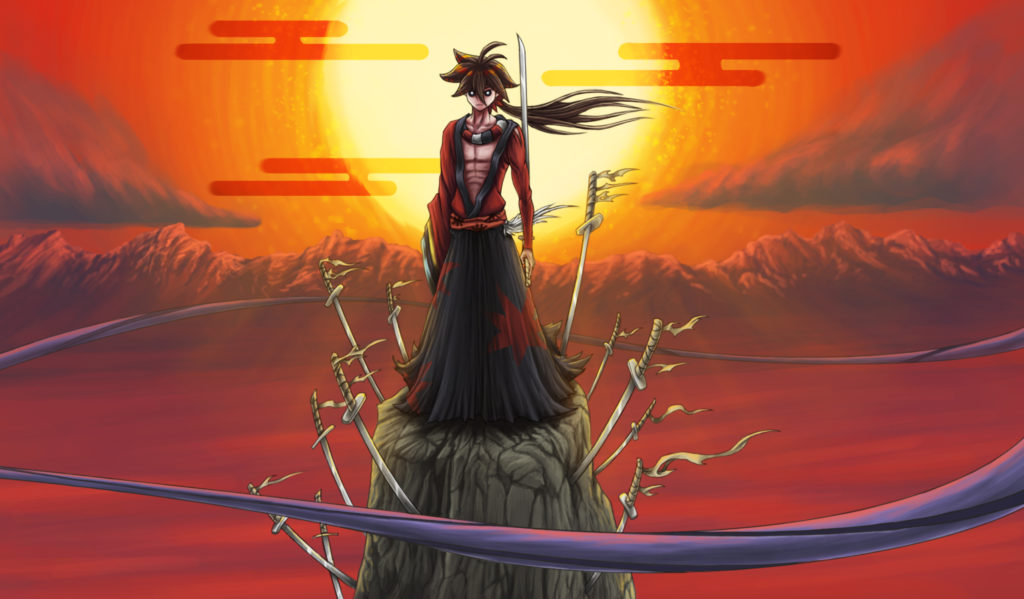
Nisio Isin, stylized NisiOisiN, is an incredibly prolific Japanese writer whose works are designed to play with audience expectations and feelings. He’s written across a wide variety of genres and mediums, including samurai drama. As one might expect, his take on the genre ended up equal parts bizarre and compelling. The 12-volume-long series Katanagatari, released in English as “Katanagatari: Sword Tale”, is a deranged period drama that combines deliberate anachronisms with a somber and thoughtful analysis of the zeitgeist at the beginning of the Edo period.
Samurai-focused historical works are often stylized and anachronistic, but Katanagatari goes the extra mile. In an alternate Warring States period, the mad swordsmith Kiki Shikizaki created 1000 swords with terrible power… and terrible effects on their wielders. Decades later, as the Edo period dawns, shogunate strategist Togame has been ordered to retrieve the 12 final Shikizaki blades. Each of these Mutant Blades could allow someone to defeat a small army. After Togame’s first two allies ran off with the blades they retrieved for her, she recruits Shichika Yasuri, son of an exiled war hero, a “swordsman” who uses his own body as a blade. Together, they must go up against a bloodthirsty ninja clan, an array of ruthless swordsmen, rival agents of the shogunate, and the specter of Kiki Shikizaki himself.
Katanagatari’s world is surreal, stylish, and over the top, but it uses its alternate history to examine the futility of using violence to change the world. The series explores corruption, dishonor, and the ruthlessness expected of Warring States period warriors clashing with the changing tides of the Edo period. At its core, Katanagatari is a story about failure and how difficult change can be. Even the most important and dangerous characters are constantly sabotaged by their own flaws, bad luck, or the world refusing to accommodate them.
Many characters die in fights that could have been avoided if they were willing to bend instead of break or are killed off in sudden and unceremonious ways. One often gets the impression they could have lived if they were only able to change the paths they were on. Those who do make it are faced with the terrible task of living after losing everything that mattered to them.
In Tale of Ronin, the player will also be faced with an array of ruthless foes, pressure from the shogunate, and an unyielding world they no longer belong in. It will be easy for ronin to descend into nostalgia for the simpler and more bloodthirsty days of the Warring States period rather than try to change with the times. However, walking the path of a bloodthirsty swordsman may lead them straight to failure, too.